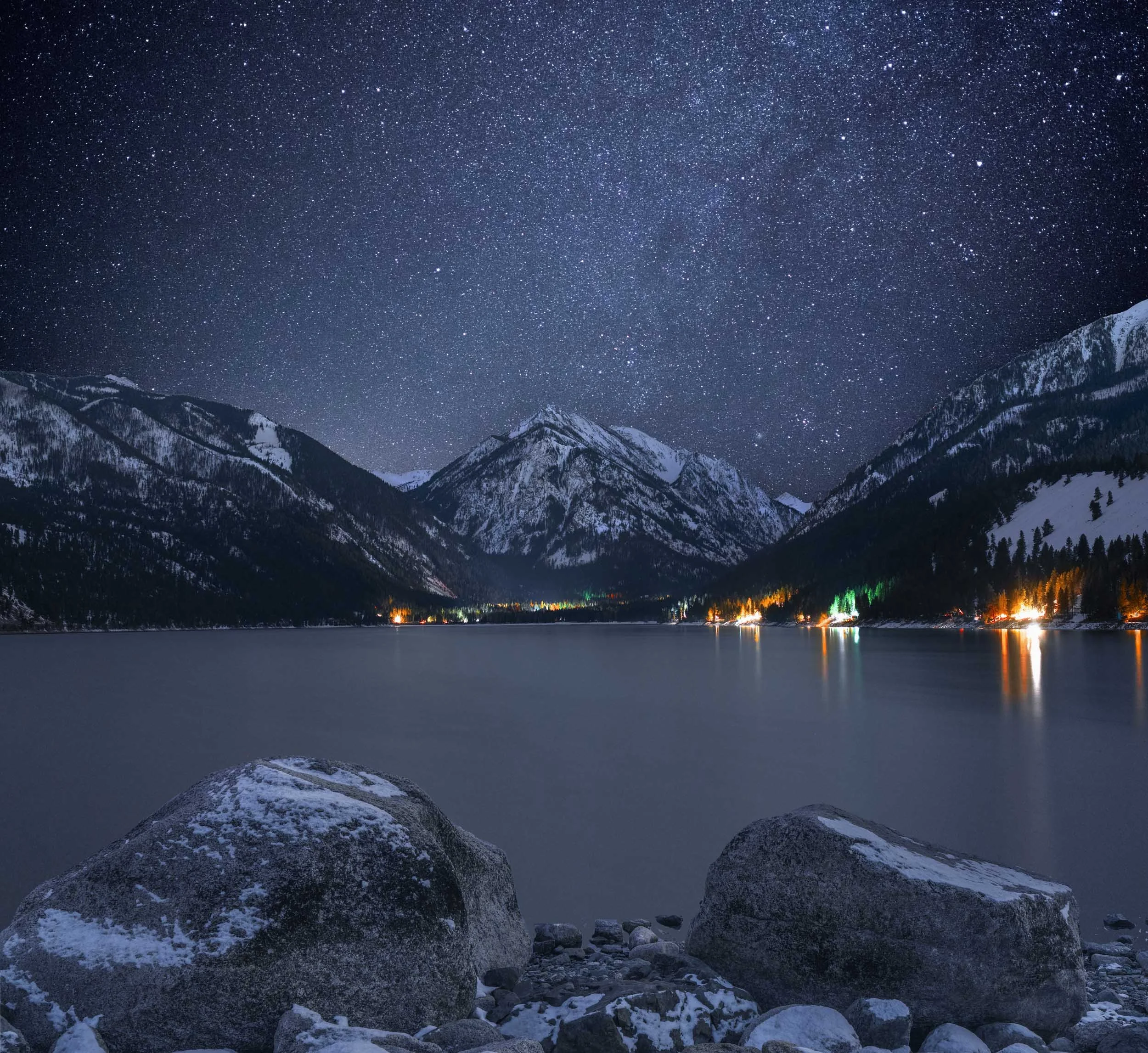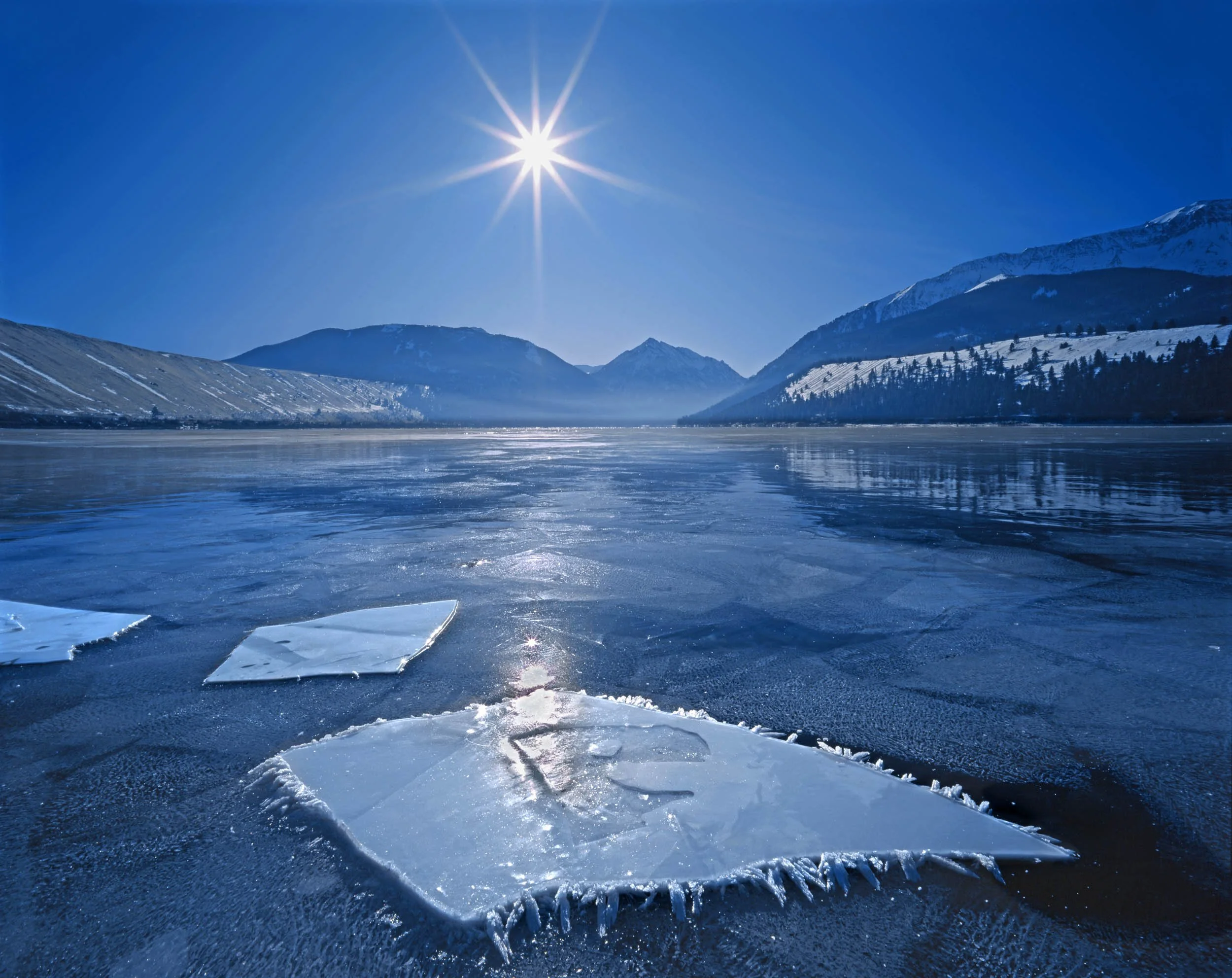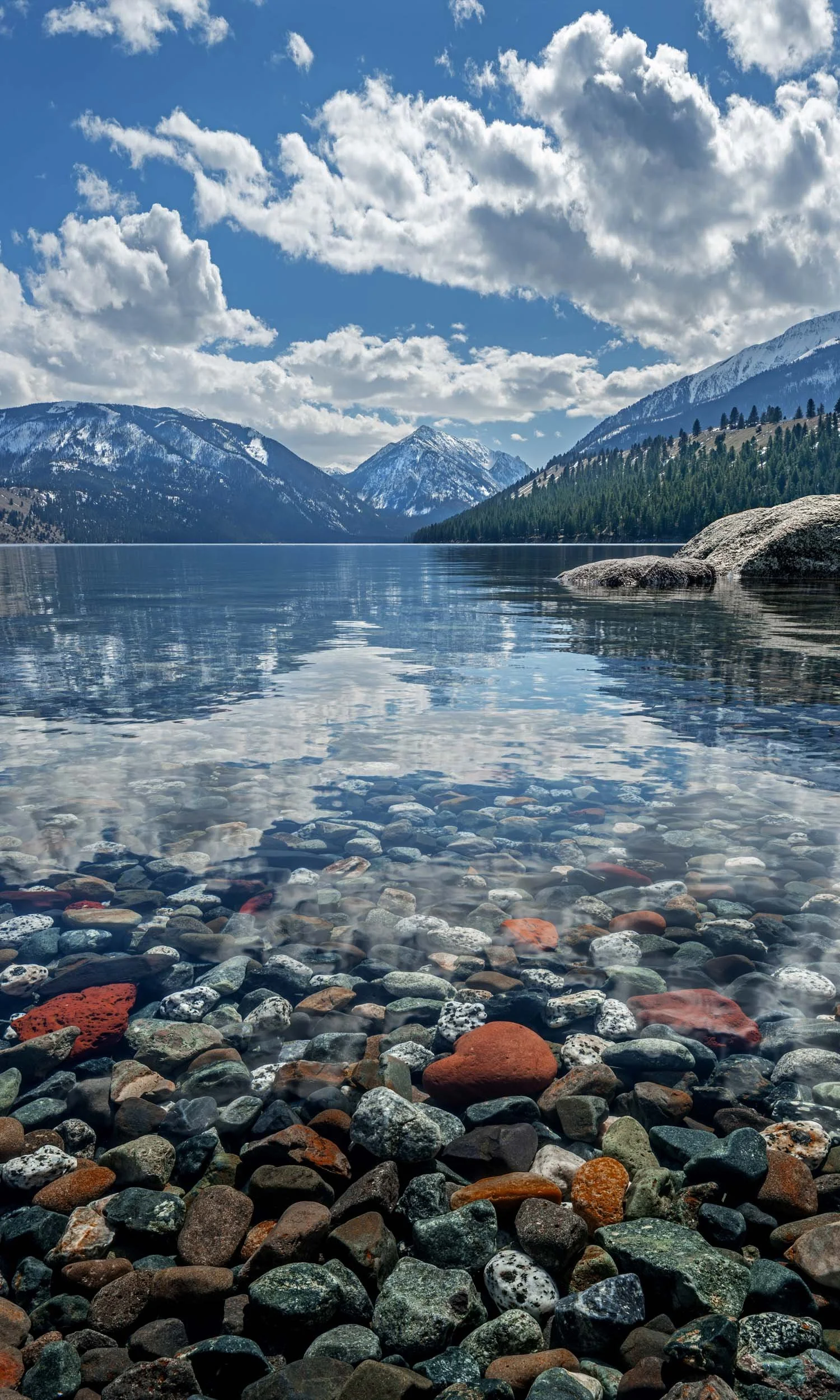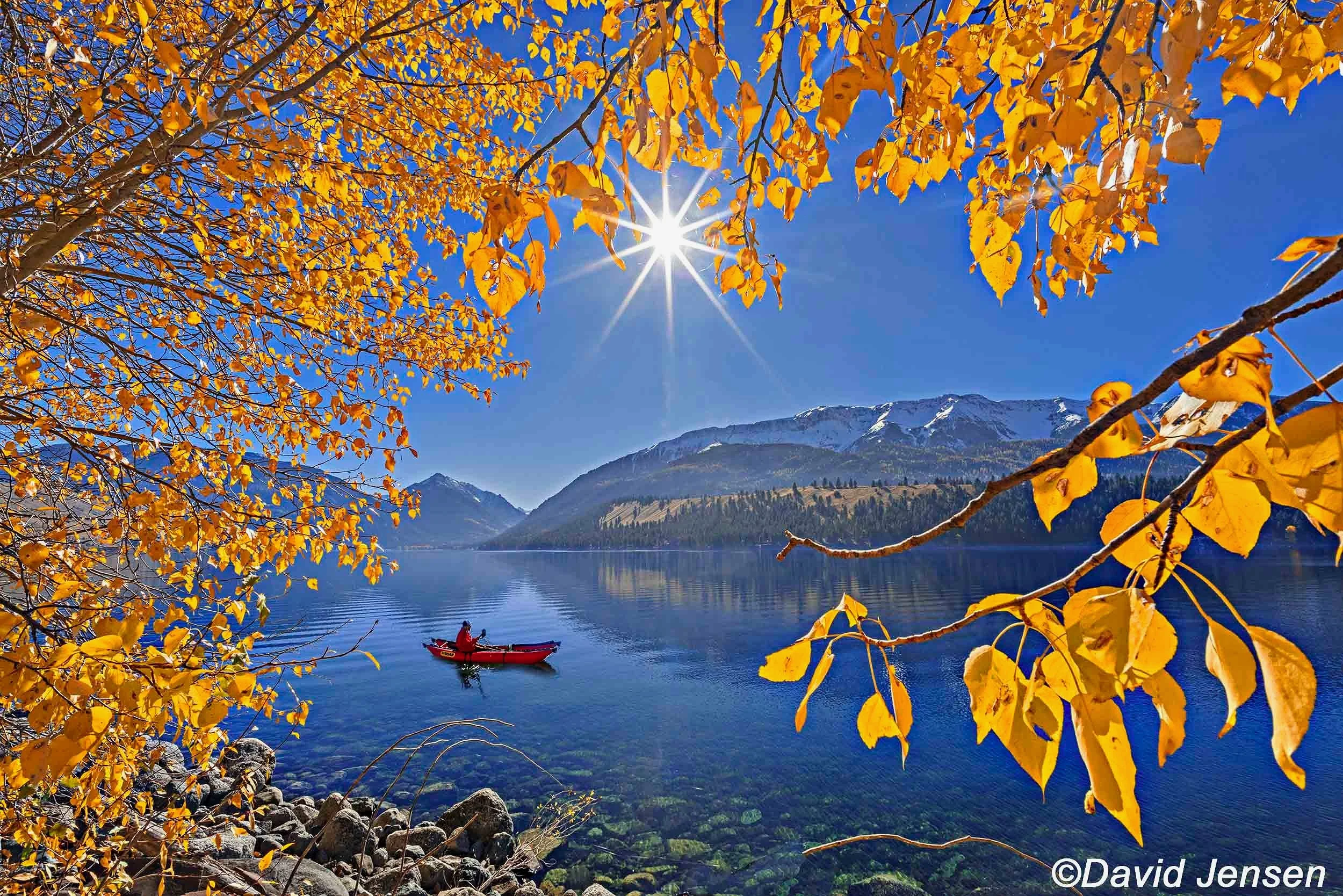WALLOWA LAKE PHOTOS
Please note this website includes many pages of Wallowa Lake photos. Click Portfolios for more photos of Wallowa lake and its surroundings..
Wallowa Lake is one of the best preserved and best displayed moraine dammed lakes in the world. According to the latest cosmogenic dating, the 13 mile long glacier that created this landscape put the finishing touches on the scene only 19,000 years ago. It was then that the erratic boulders studding the moraines were dropped by the glacier as it began its final retreat (final, that is, unless mankind’s emergence as geological agent has been exaggerated).
The unique, iconic peak at the lake’s south end is Mt. Bonneville, named for Captain Benjamin Bonneville who explored part of the Wallowa country in 1834 and who has been credited, probably unjustly, with being the first white man to set foot in Oregon’s northeast corner. It is less a mountain than an “arete,” a long, sharp ridge carved by the two valley glaciers on either side which united to form the single glacier that created the moraine-bound basin now occupied by the lake. Over the last 2.6 million years, these two glaciers flowed forth many times and likely left early versions of Wallowa Lake when they retreated and disappeared, each time leaving ridges of boulders and gravel known as moraines. Together, Mt. Bonneville and the moraines make the lake visually distinctive.
The lake is also distinguished by being one of the most neglected and ignored roadside attractions in the world, at least by photographers. In over 50 years of photographing this marvel, I have shared the lake with another photographer only twice. Compare that to the typical roadside attraction where you and your tripod have to wait in line behind other photographers before finally getting a chance to imitate compositions that were being imitated decades ago. Arriving at Wallowa Lake and not seeing another tripod anywhere, a photographer can almost enter the fantasy of doing something original and useful.
C100 Icicles in January
C101 Frozen Moment
C102 Wallowa Lake under the stars
C103 Frozen Wallowa Lake and Moon
C104 Windy sunrise
C106
C107
C108 Wallowa Lake balsam root 23
C109
C110
C111 Summer solstice
C112
C113
C114
C115
C116
C117
C118
C119 Balsam root bllooms
C120
C131 Frozen and frosted floes
C121 Icy shore
C123 Shore ice
C122
C124
C125
C126
C127
C128
C129
C130
C132 Solstice sunrise
C133
C134
C135
C136
C137 Phenomenal Ephemera
C138
C139
C140
C141
C142
C143
C144
C145
C146
C157 Wallowa Lake State Park
C158 Wallowa Lake State Park
C159 Wallowa Lake State Park
C160 Ripples below Chief Joseph Mountain
C161 Wallowa Lake State Park
C162 Wallowa Lake cottonwoods
C147
C148 Freezing at sunrise
C149
C150
C151 Slabs of ice
C152
C153
C154 Ripples and Mt Bonneville
C156
C157





























































